Medieval English Music / The Hilliard Ensemble
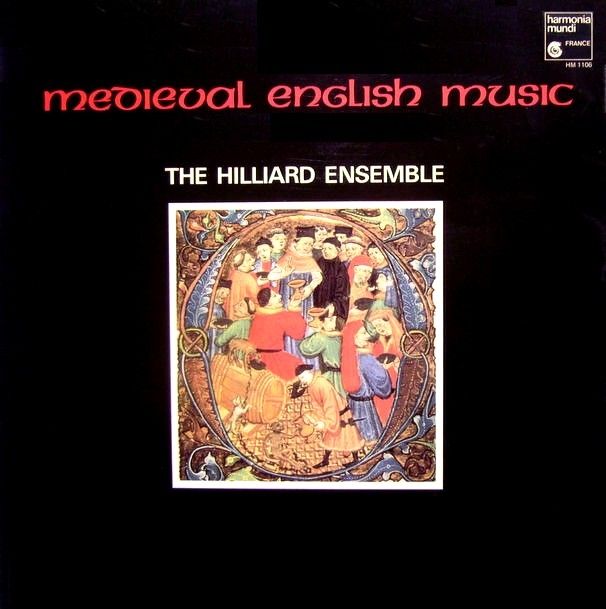
medieval.org
Harmonia Mundi HMC 1106 (LP)
CDs:
Harmonia Mundi HMC 901 106
Harmonia Mundi "musique d'abord" HMA 190 1106
Harmonia Mundi "Classical Express" HCX 395 1106
Harmonia Mundi "musique d'abord" HMA 195 1106
1983
XIVe siècle
1. Alleluia. Hic est vere martir [4:01]
2. Singularis laudis digna [5:36]
3. Doleo super te [1:33]
4. Thomas gemma Cantuarie [2:23]
5. Civitas nusquam conditur [2:25]
6. Tu civium primas [2:41]
7. Mater Christi nobilis [1:33]
8. Ite missa est [1:30]
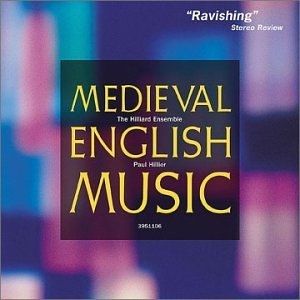
XVe siècle
9. Alleluia. A newe work [3:47]
10. John PLUMMER. Anna Mater Matris Christi [6:01]
11. There is no rose [3:50]
12. Tota pulcra es amica mea [4:08]
13. Marvel not, Joseph [8:18]
14. O potores exquisiti [4:18]
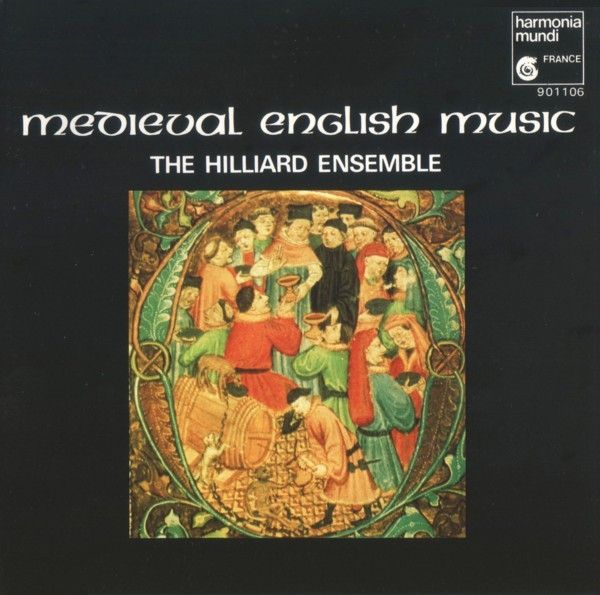
THE HILLIARD ENSEMBLE
Ashley Stafford, countertenor
Paul Elliot, tenor
Rogers Covey-Crump, tenor
Leigh Nixon, tenor
Paul Hillier, bass
harmonia mundi Ⓟ 1983
Enregistrament septembre 1982
Prise de son Jean-François Pontefract
Assistance musicale Marcel Frémiot
Illustration: Miniature, "O potores" / British Museum BM Egerton 3307
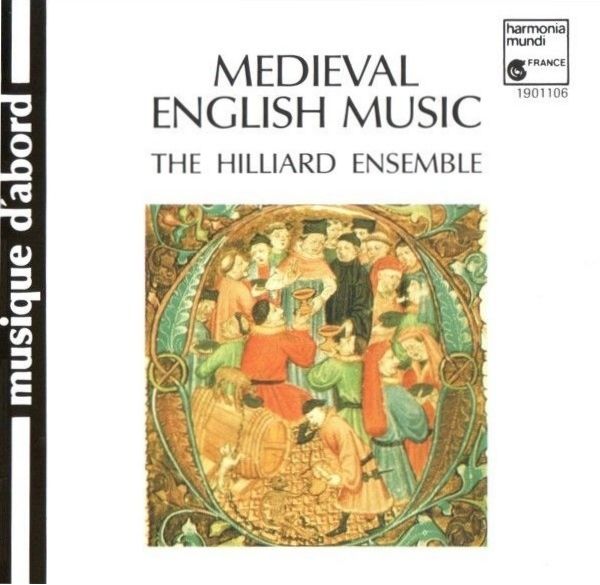
The Fourteenth Century
The 14th century was an age of «modern music». So, in a
sense, is every age; but like ourselves today, people in the 14th
century were aware that things were new.
Musicians were conscious of creating a new art. For this period as a
whole, music historians have been content to retain the name «Ars
Nova» used by the French theorist and composer Philippe de Vitry
as the title for his treatise around the year 1320.
The essence of this newness lay in rhythm - or, rather, in the
development of a system ofnotation that encouraged the combination of
many different lengths and subdivisions of notes. Thus grew up a
particular musical style, a refinement that became inereasingly
mannered as the century grew old, but wbich found its finest expression
in the music of Guillaume de Machaut and, in Italy, Francesco Landini.
England
Since the Norman Conquest in 1066, English culture had been dominated
by French influences, nevertheless, medieval English literature
maintained its vernacular core onto which Chaucer successfully grafted
the French inheritance (taking not a little inspiration from Italian
literary forms). Similarly, towards the end of the 14th century,
Englisb music had evolved a style that could draw upon a mixed heritage
from England and France (and some ideas from Italy), moulding them
together into a national style that was admired abroad as «La
Contenance Angloise».
Despite the scant remains, it is possible lo build up a reasonable
picture of English music in the 14th century and even to point to some
of its dominant characteristics. These are found above all in two
frequently used techniques: the parallel movement in chords known as
Descant, and the repeat or answering exchange of words and melody
between one singer and another as found in Rondellus.
In maintaining a preference for chordal sonorities, even in pieces that
apply the rondelus tecbnique (such as «Thomas gemma>), and in
being slow to adopt the isorhythmic motet style so prevalent on the
continent, English composers were being more than just typically
conservative. The works in tbe first half of this record show that a
somewhat separate development took place in this country. In
particular, the fuller sound favoured by the descant style formed an
important aspect of the Old Hall music and was a major characteristic
of English music through to the 16th century. Descant also emphasises
the intervalof the third, hitherto regarded as a dissonance, and it is
the integration of this interval into a particularly consonant style of
music that distinguishes the «contenance angloise» sound,
and both these aspects of descant later dominate the style of the 15th
century carols.
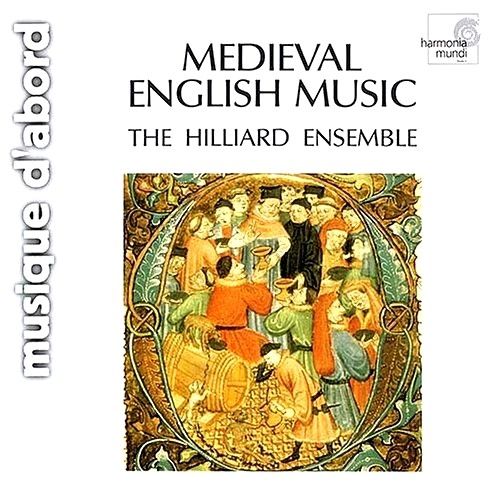
The 14th century music
In «Thomas gemma / Thomas cesus» the upper pair of voices
has two closely related texts, one in praise of St Thomas of
Canterbury, the other of St Thomas de la Hale of Dover Priory. The
composer handles these brilliantly so that the voice exchange is both
an interweaving and an opposition of the texts and music. The lower
untexted voices also form a pair, partly imitating the upper voices,
but also providing an harmonic basis and, later, enjoying two passages
of hocket.
«Tu civium primas» has not one, but four texts - in praise
of Simon Peter and the foundation of the Christian Churcb. The upper
voices do imitate each other to a certain extent, but this motet is
more harmonically conceived, often using descant over a bass
«pedal» note.
Descant is also used, but freely, in two moteis that invoke the help
ofthe Virgin Mary, «Mater Christi nobilis» and
«Singularis laudis digna», the latter calling for peace in
the «Hundred Years War» with France.
«Civitas nusquam» celebrates Edward the Confessor, who
ruled Anglo-Saxon England in the mid-11th century. This is a more
traditional motet in its manner of textual declamation by two voices
(each with its own text) built around a plainsong tenor laid out in
slow, regular notes. The plainsong has not been identified but is
presumed lo be from the office of St Edward, King and Confessor. Such a
description, however, does not prepare us for the simple beauty of the
resulting music.
Similarly in «Doleo super te» a mostly syllabic declamation
above a slower, partly isorhythmic tenor produces one of the most
tender expressions of personal desolation to be found anywhere in
medieval music. Certainly a place may be claimed for this short piece
alongside other famous laments on this and related texts by composers
such as Josquin, Tomkins and Schütz.
«Alleluia: Hic est» provides a vehicle for vocal virtuosity
in an elaborated descant style (with the tenor, less usually for this
style, in the lower voice). The chromatic intervals create an air of
mannerist strangeness, uncommon in English music at this time as it
moved towards the music of Old Hall and Dunstable.
The «Ite missa est was the dismissal at the end of Mass; tbe
jubilant setting performed here must have sent the congregation
skipping home!
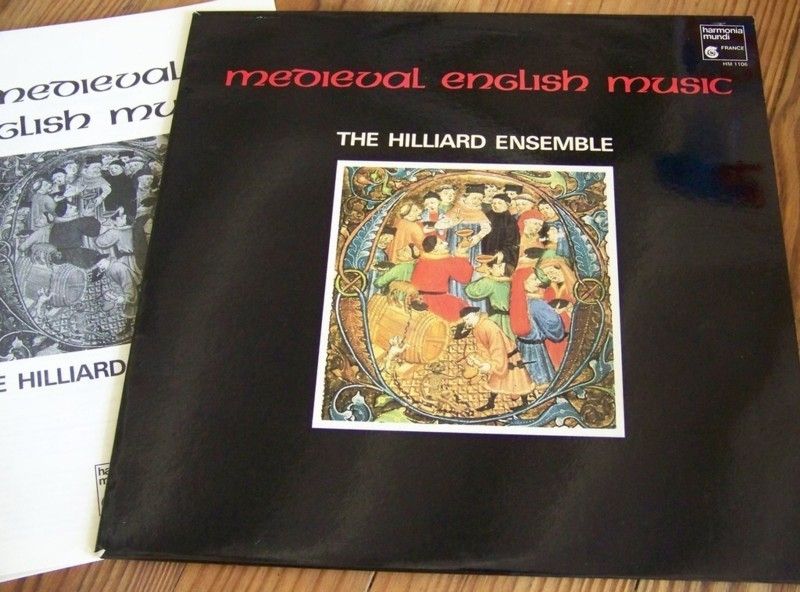
15th century English music
The eminence of the English «contenance» lasted only a
generation or two. According to the Flemish theorist Tinctoris, writing
around the year 1470, whereas Dunstable had been the fount and origin
of the new music (of Dufay, Binchois and later Ockeghem), the English
now «continue to use one and the same style of composition, which
shows a wretched poverty of invention». In terms of the
developing language in Burgundy, France and the Netherland, he was
correct - but it would be wrong to dismiss tbe carols and, a little
later, the music ofthe Eton Choirbook as inferior products in
themselves. In fact both as music and poetry, the 15th century carol,
togetber with its successor the courtly songs and Passion carols in the
Fayrfax Manuscript (c. 1500), constitutes a very important area in the
history of English song.
Almost all the 15th century carols are anonymous, and while many of
them, perhaps the majority, are associated with the festive period from
Christmas to Epiphany, many other subjects are also treated, by no
means all of them religious. There are carols to celebrate military
victories, carols of love, drinking songs, carols in praise of numerous
saints, and carols on themes of a moralistic rather than religious
nature. The definition of a carol has best been formulated by R. L.
Greene as «a song on any subject, composed of uniform stanzas,
and provided with a burden».
Most of the 15th century carols are for two voices joined by a third,
usually in descant style, in the burden. The prevailing melodic idiom
is that of the 15th century chanson, redirected slightly by thbe
inflections of the Englisb language. The carol is thought to have
originated from the early medieval dance songs with their clear
divisions into verse and chorus; but many other influences are felt in
these works, which are products of sophisticated minds, however mixed
and «popular» the audience tlo which they were directed.
Contemporary with the carols are mature examples of the
«contenance angloise» such as Forest's «Tota pulcra
es», with its suave interlacing of vocal lines and sweet
harmonies based on the interval of the third (and with a characteristic
change of metre - at «et vox turturis»). In the slightly
younger John Plummer's «Anna Mater» (Anna, the mother of
the Virgin Mary), we find an early example of the Votive Antiphon which
became such a favourite with English composers towards the turn of the
century.
During the second half of the 15th century, English music became
increasingly conservative, measured against continental models; but as
it has remained so almost continually ever since, we must conclude that
it is the natural tendency of an island race, and that much fine music
can be written on islands!
Paul Hillier







